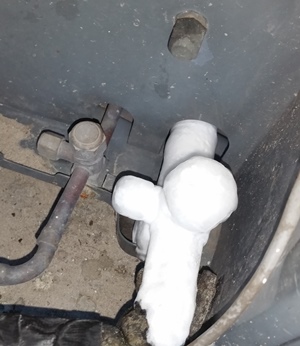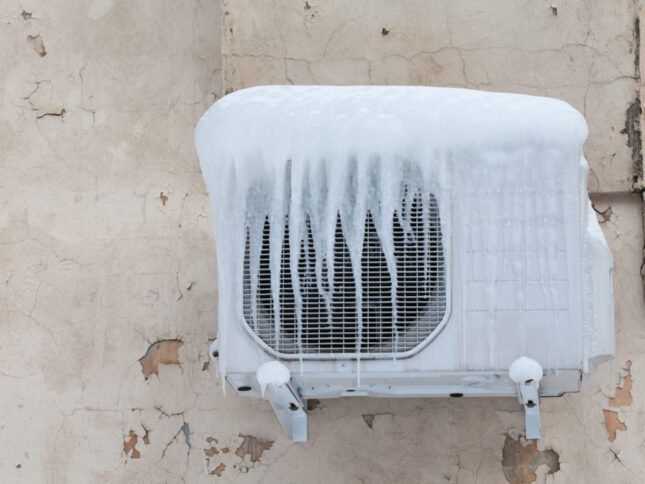Handling a Frozen AC Pipe - Guidance for Addressing the Issue
Handling a Frozen AC Pipe - Guidance for Addressing the Issue
Blog Article
Do you find yourself looking for tips concerning What Causes AC Pipes To Freeze??

Intro
Discovering that your a/c pipe is frozen can be concerning, especially during hot summer season when you rely on your ac unit one of the most. Recognizing what to do in such a circumstance is critical to prevent further damage to your cooling system and guarantee your convenience inside your home.
Recognizing the Causes
Numerous aspects can add to the cold of an a/c pipeline. Recognizing these reasons can assist you attend to the problem effectively.
Absence of Airflow
One typical root cause of a frozen a/c pipe is inadequate airflow. When the air movement over the evaporator coil is restricted, it can trigger the coil to go down below freezing temperature level, bring about ice development on the pipe.
Reduced Refrigerant Levels
Not enough refrigerant degrees in your a/c system can also cause an icy pipe. Reduced refrigerant degrees can create the pressure in the system to drop, resulting in the freezing of wetness on the evaporator coil.
Cold Weather Conditions
In chillier environments, freezing temperature levels outside can add to the cold of a/c pipes. If your AC system is not correctly shielded or if there are leaks in the ductwork, chilly air can penetrate the system, causing the pipe to freeze.
Dirty Air Filters
Unclean or clogged up air filters can limit airflow in your AC system, resulting in various concerns, consisting of an icy pipeline. It's essential to change or clean your air filterings system frequently to make certain appropriate air flow and prevent ice accumulation.
Indicators of a Frozen A/c Pipe
Acknowledging the indications of a frozen AC pipe is important for timely activity.
Minimized Airflow
If you discover a considerable reduction in air flow from your vents, it might show an icy pipeline.
Ice Buildup on the Pipe
Noticeable ice build-up on the cooling agent line or the evaporator coil is a clear indication of a frozen air conditioner pipeline.
Odd Sounds from the Unit
Unusual noises, such as hissing or gurgling, coming from your air conditioner system can signify that there's ice existing on the pipe.
Immediate Actions to Take
When faced with an icy a/c pipe, it's necessary to act quickly to stop more damages to your cooling system.
Switching off the a/c
The very first step is to switch off your air conditioner to stop the system from running and intensifying the concern.
Checking for Blockages
Inspect the location around the interior device for any obstructions that may be blocking airflow, such as furniture or drapes.
Defrosting the Pipe
You can use mild approaches like placing towels soaked in warm water around the frozen pipeline to aid thaw it gradually.
Preventive Measures
Taking preventive measures can help avoid future incidents of a frozen a/c pipeline.
When DIY Methods Fail
If your efforts to thaw the pipe or address other issues are not successful, it's time to employ an expert.
Importance of Hiring a Professional HVAC Technician
A qualified HVAC specialist has the experience and devices essential to identify and repair concerns with your a/c system safely and successfully.
Normal Maintenance Checks
Schedule normal upkeep talk to an expert HVAC professional to ensure that your a/c system is running successfully.
Changing Air Filters
Consistently replace or cleanse your air filters to prevent airflow constraints and preserve optimal efficiency.
Shielding Exposed Pipes
If your a/c pipelines are exposed to cold temperatures, consider shielding them to stop freezing throughout winter season.
Seeking Professional Help
If DIY techniques fall short to resolve the issue or if you're uncertain concerning exactly how to continue, it's best to look for support from a certified HVAC specialist.
Conclusion
Managing a frozen AC pipeline can be an aggravating experience, but understanding how to respond can help minimize damages and bring back comfort to your home. By recognizing the reasons, recognizing the indicators, and taking punctual action, you can successfully deal with the issue and protect against future events.
What to Do If Your AC Line Is Frozen
Make Sure All Supply and Return Air Vents Are Open
If you notice problems with airflow, the first thing you should do is check your supply and return vents. Supply vents distribute clean, conditioned air throughout your home. As this air becomes stale, it’s pulled into the return vent, where it’s reconditioned before being sent back out through the supply vent.
When these vents are closed, air won’t flow in the home. Before examining your AC, check the vents in every room and ensure they’re all open.
Check for a Dirty Air Filter
Another possible cause of limited airflow is a dirty air filter. Your air conditioner’s filters catch elements you don’t want to breathe in, such as dirt and dust. Over time, filters can become clogged, ultimately blocking air from flowing in and out. The lack of airflow can then cause the entire coil to freeze and will completely restrict any air from moving through it. The AC may need to be powered off for one to two days to allow the coil to thaw after replacing the filter to allow proper functioning of the unit. This debris can also accumulate on your AC’s evaporator coil, requiring a more serious repair. In general, air filters should be cleaned regularly (about every two weeks).
Assess Your Outdoor Unit
In addition to checking your AC, assessing the outdoor unit is a good idea. Also known as the condensing unit, it works with your interior unit to release heat outside. An issue with the outdoor unit can result in rising internal temperatures.
Overgrown Shrubs or Clogged Leaves
From leaves and twigs to shrubs and debris, there’s no shortage of outdoor elements that can accumulate around your condensing unit. When these elements get lodged inside the unit, they can block airflow. Fortunately, removing the blockage can solve the problem.
Sounds of a Broken Fan
Shrubs and leaves aren’t the only things that can impede your outdoor unit’s airflow. If the fan is broken, the unit won’t be able to properly get rid of heat — which means the internal temperature won’t go down. First, make sure the fan is spinning. If it is, check for the following sounds of a broken fan:
Buzzing Rattling Screeching Hissing Clicking Preventative Measures
Nobody wants to deal with a frozen AC line. In addition to causing problems with your air conditioner, they require professional repairs. On the bright side, there are preventative measures you can take to help ensure this issue doesn’t arise in the first place.
https://www.coopergreenteam.com/blog/what-to-do-if-ac-line-frozen

We are very serious about Why Is Ice On My Outside Air Conditione and I am hoping you enjoyed the entire entry. Those who enjoyed reading our page kindly do not forget to pass it around. Thanks so much for your time spent reading it.
Call Today Report this page